
The next morning Greg’s ankle was feeling somewhat better, and the swelling had gone down. After a lovely breakfast at Hotel Martha, we loaded up on the bus and set out for the Czech Republic. Along the way, Jana told us more stories about what it was like growing up under Communist rule. She explained that they had enough of everything—they did not go without the basic necessities—but there was little variety and consumers had few choices. One of the things that they did not have access to was Western soda drinks. Instead of Pepsi and Coca-Cola, they had “Kofola,” which originated in the Czech Republic and is still sold there (though it now has much more competition). Not content to just tell us about it, Jana passed out cups and poured us samples. I could drink Kofola if I had nothing else and I was really, really thirsty. But I definitely would not choose to drink it. I was very grateful for this experience a few days later when we were having lunch in Cesky Krumlov. At the little pizza restaurant, Kofola was the only soda on the menu. I might have ordered it had I not known better. Jana saves the day again!
Our tour was of the Small Fortress, which is located approximately a half-mile from the ghetto. The first site that greeted us was a massive cemetery. Approximately 10,000 people are buried here, either in individual or mass graves. To enter into the small fortress, you must pass through a gate under the Nazi slogan “Arbeit Macht Frei.” Thousands of prisoners were housed in the small fortress during WWII, including resistance fighters, communists, and friends and relatives of the brave Czech men who assassinated Reinhard Heydrich, the SS commander known as the "Butcher of Prague." Our group of 21 stood uncomfortably in one of the small cells lined with 3-tiered wooden bunks. Each cell had only one toilet and one sink. Our Terezin guide asked us to imagine being in that small space with as many as 60 or 90 other people. She spoke passionately, with tears in her eyes, about the deplorable conditions that the prisoners endured. The day was stifling, with no air moving, and I think we experienced at least a hint of what life was like for those imprisoned there. It was one of those moments when you remind yourself that you have no right to complain about anything, ever. The Jewish prisoners received the harshest treatment, placed in even tinier cells, up to 60 at a time, with no fresh air, no toilet, and no furniture.
Prior to WWII, the Small Fortress was also utilized as a prison by the Habsburgs. One of the most famous prisoners housed at the small fortress was Gavrilo Princip, the man who assassinated Archduke Franz Ferdinand and his wife Sophie, the event that triggered WWI. Princip died there of tuberculosis after 4 years of imprisonment.
Tour Day 5: Thursday, June 23
After the somber visit to Terezin, we were ready for something lighter, and we got it with a tour and lunch at Nelahozeves Castle. The beautiful 16th century castle sits on a hill above the Vltava River. The Lobkowicz family, a Bohemian noble family, has owned the castle since 1623, though it was never their principal residence. The castle was confiscated first by the Nazis, then by the communists. The family fought to get it back, and it was returned to them in 1993. The outer walls of the castle are covered with sgraffito designs, which involve scratching through the surface to reveal a contrasting color below. These have been restored and are quite impressive. We were given a guided tour of the family's private living quarters, which included their collection of paintings. We had a relaxing lunch, and then we were back on the road headed for Prague.
 |  |  |
|---|---|---|
 |  |  |
 |  |  |
 |  |  |
 |
How About an Ice Cold Kofola?
Terezin Memorial
Lunch at Nelahozeves Castle
Evening in Prague
We arrived in Prague around 4pm and checked into the Hotel Art Embassy in the Old Town. Our room was very nice, but unfortunately the air conditioning was never able to keep up with the abnormally hot temperatures the city was experiencing. On the way to dinner at Klub Architektu, Jana gave us an orientation of the Old Town. The architecture was beautiful, but my impression was similar to Alexanderplatz in Berlin--extremely crowded, noisy, touristy. Of course we were visiting during summer, so knew this was to be expected. I would like to visit Prague again, but never during the summer. After our group dinner, we walked to the Vltava River and enjoyed our first gorgeous view of the Charles Bridge.
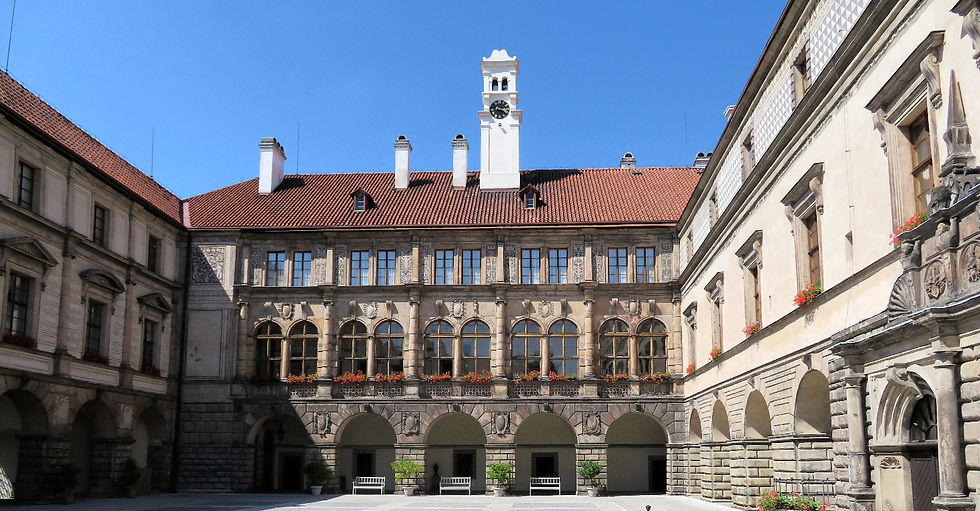
Beautiful courtyard at Nelahozeves Castle.
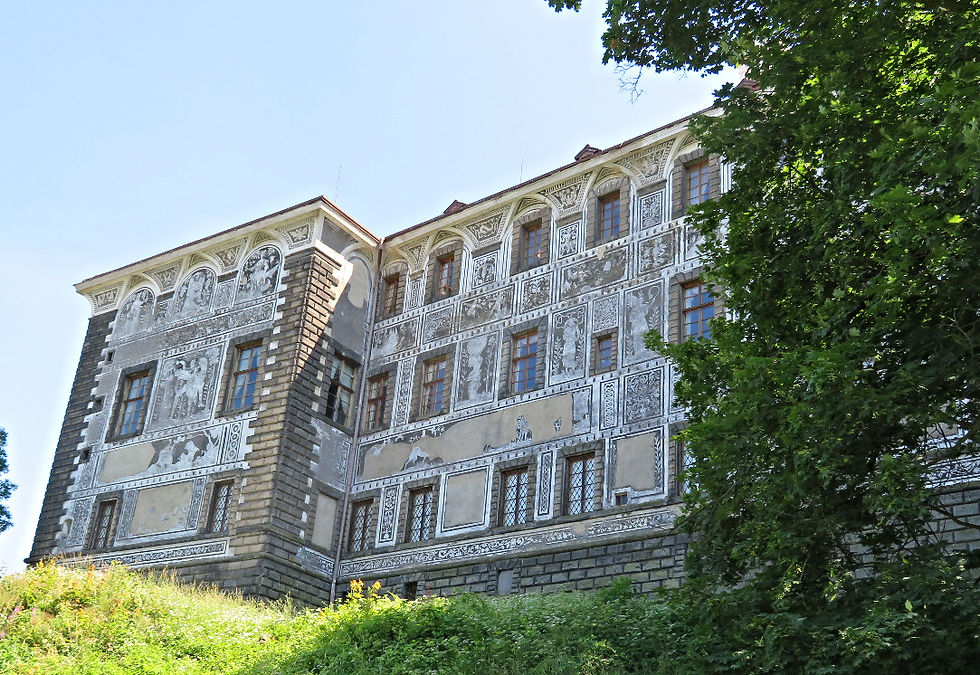
Beautiful sgraffito decoration on the outer walls of Nelahozeves Castle.

Inner hall, overlooking courtyard at Nelahozeves Castle. We were not allowed to take interior pictures beyond this point.
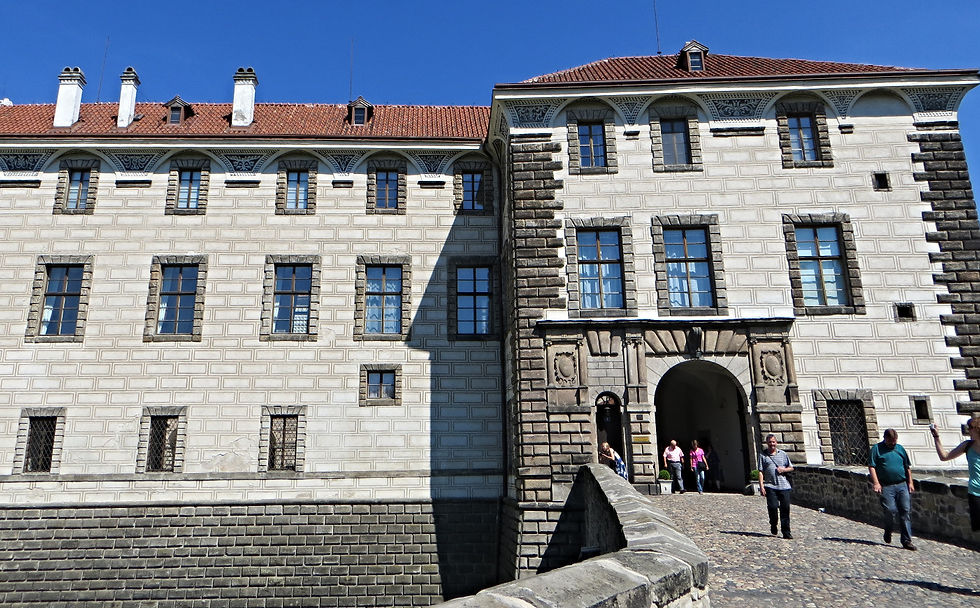
Greg and other tour members exiting Nelahozeves Castle.
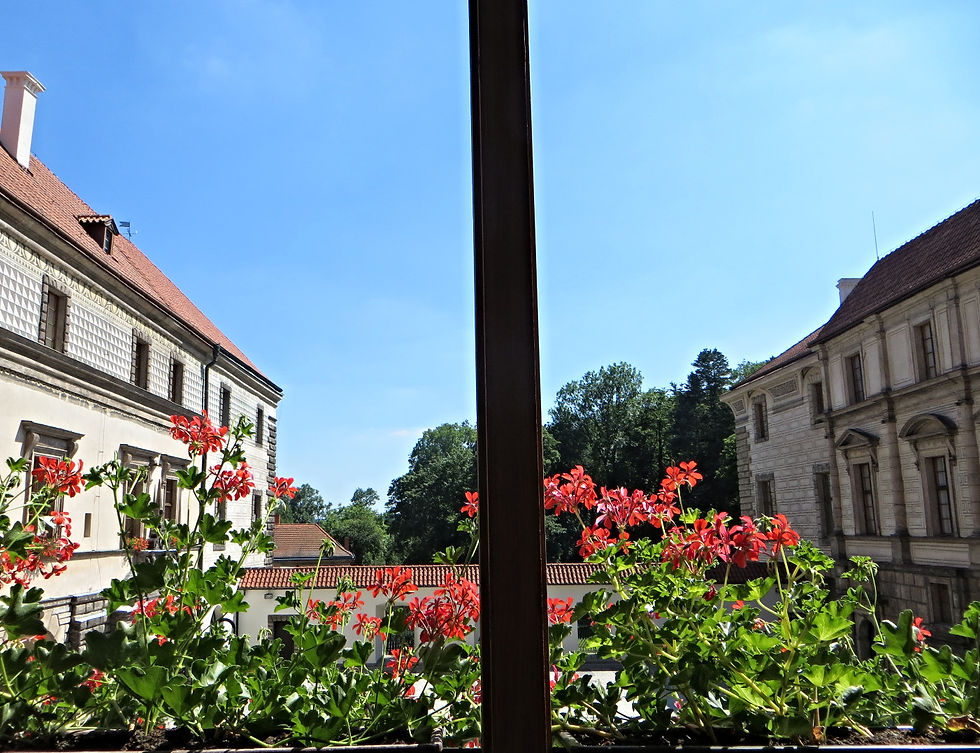
Looking out of a window at Nelahozeves Castle. Beautiful view!

One of the original city gates in Old Town, completed in 1475. It is the starting point for the royal route to Prague Castle. It was used to store gunpowder in the 17th century, which is how it earned its name.

The astronomical clock in the Old Town Square. The oldest parts date to 1410. It includes an astronomical dial and a calendar dial. Four figures represent vanity, greed, death and lust. Every hour the skeleton rings a bell. Apostles rotate by the openings above the clock on the hour.
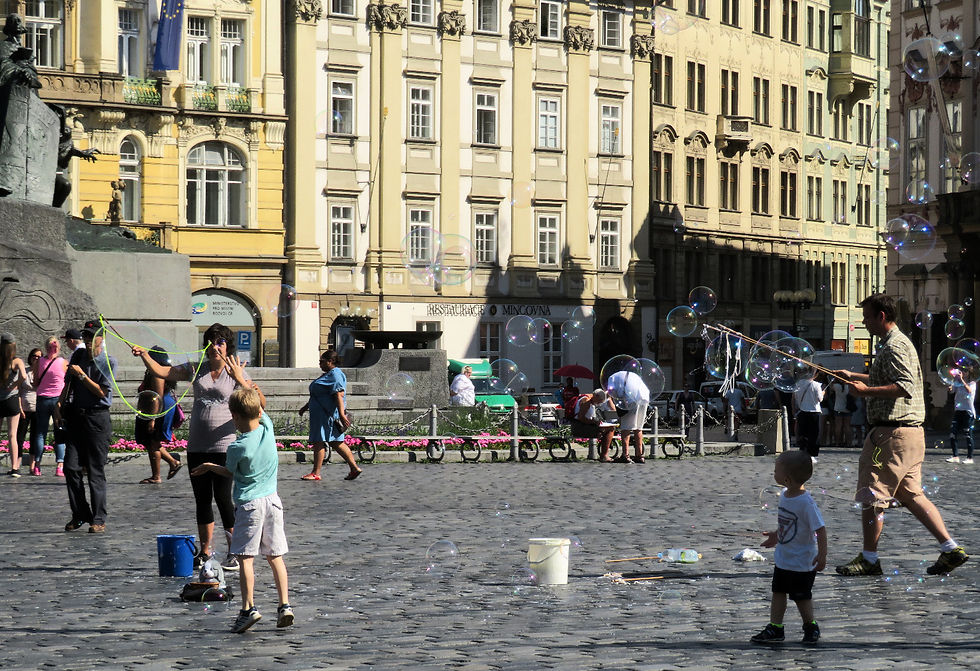
Fun with bubbles!
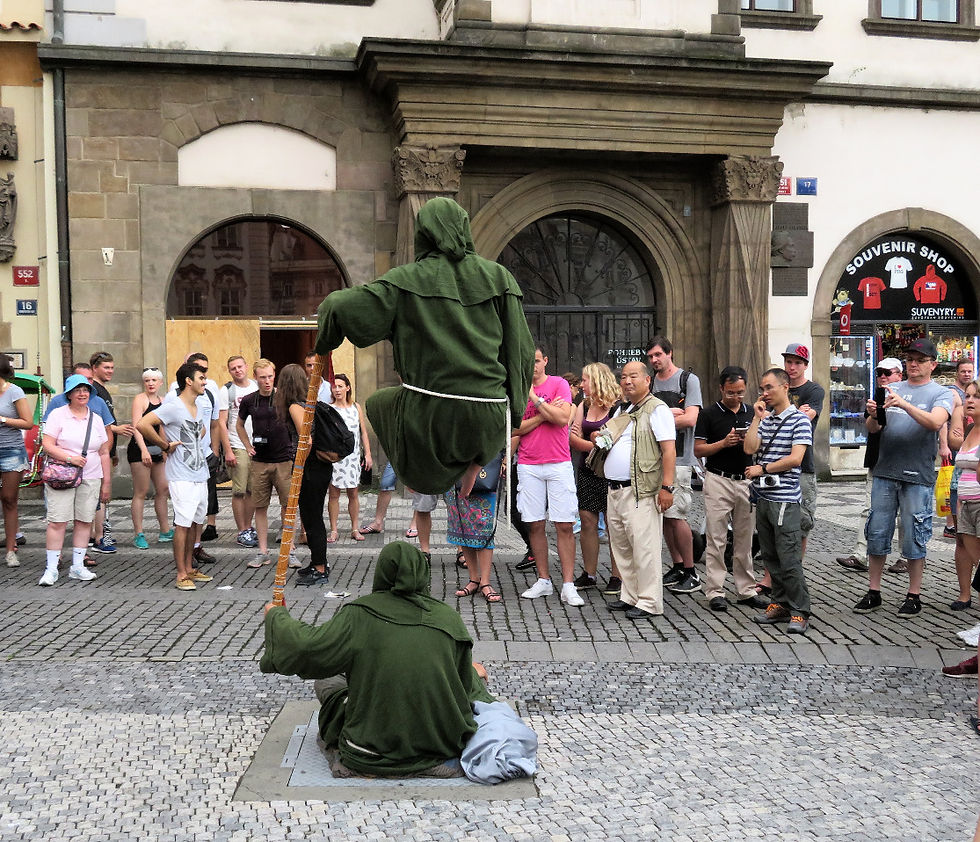
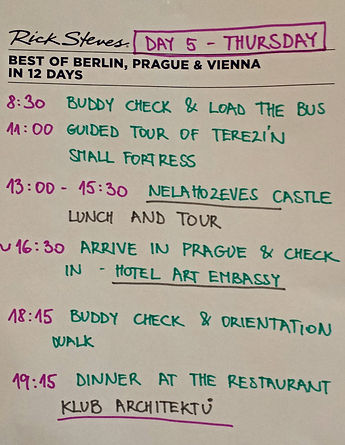

Crossing the border from Germany to the Czech Republic was a non-event. I would not have even known had it not been pointed out by Jana. Our first stop in the Czech Republic was the Terezin Memorial (the German name is Theresienstadt). Terezin consists of two parts: the walled town (Main Fortress) that was turned into a Jewish ghetto, and the gestapo prison camp (Small Fortress) that primarily housed non-Jewish political prisoners. The Nazis sent thousands of Jews to the ghetto, which was used as part of an elaborate deception to convince the Red Cross that the Jews were being “resettled” to model Jewish communities. We purchased a DVD from Amazon called “Holocaust: Theresienstadt,” which provides a good overview of how the Nazis used this camp to pull the wool over the eyes of the Red Cross inspectors and what life was really like for the people imprisoned there. Approximately 150,000 Jews were sent to Terezin during the war. The vast majority died, either at Terezin, or after being deported to extermination camps like Auschwitz.